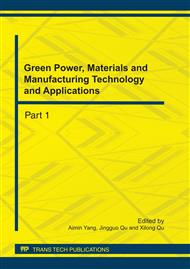p.461
p.466
p.471
p.476
p.480
p.485
p.489
p.494
p.499
Influence of Mo/Sb Co-Doping on Scintillation Properties of PbWO4 Crystal
Abstract:
Lead tungstate, PbWO4 single crystals co-doped with Mo6+ and Sb3+ ions were grown using the modified Bridgman method. The X-ray powder diffraction, optical transmission, X-ray excited luminescence, photoluminescence, light output and decay time have been investigated. Compared to non-doped PbWO4, the co-doped PbWO4:(Mo,Sb) crystals exhibit improved transmittance in the short wavelength region. Luminescence and light output measurements demonstrated that Mo6+ and Sb3+ co-doping could enhance the luminescence of PbWO4 and increase the light output to about 7.0% of Bi4Ge3O12 crystal. Doped Mo6+ and Sb3+ ions in PbWO4 were tentatively considered to occupy W and Pb sublattice sites mostly. The second excitation peak at 385 nm, which is the second effective excitation for the enhanced blue-green emission in as-grown PbWO4:(Mo,Sb) crystal, should be related to [MoO4]2- group and oxygen vacancy.
Info:
Periodical:
Pages:
480-484
Citation:
Online since:
August 2011
Authors:
Price:
Сopyright:
© 2011 Trans Tech Publications Ltd. All Rights Reserved
Share:
Citation:


